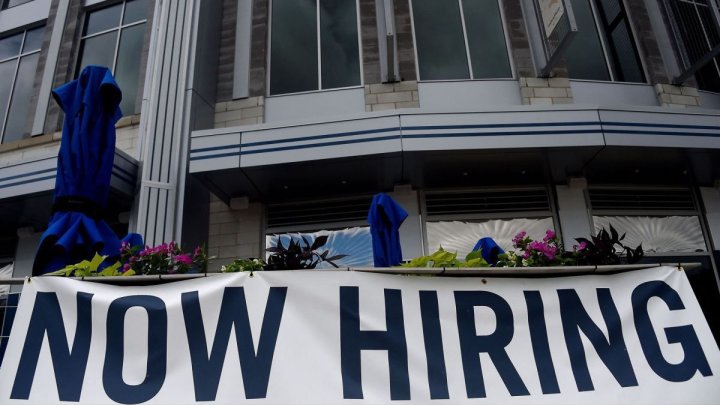Relief checks: summary news 9 January
Changes to the COLA for the coming year affect everything from Social Security to disability payments. Follow along with updates.


Show key events only
Inflation Relief: Latest Updates
Headlines | Monday 9 January 2023
- Nasdaq closed down 4.6 percent lower on Friday compared to data from one month ago
- Unemployment falls to 3.5 percent, the same rate seen in February 2020
- Social Security beneficiaries begin receiving checks with 8.7 percent COLA applied
- The Federal Reserve is expected to bump up interest rates further in early February
- Interest rates for 30-year fixed mortgage fall slightly to 6.5 percent
Energy prices continue to increase in the United States
As the economy continues to feel the impacts of the Russian invasion of Ukraine, one of the sectors most impacted in energy.
The US Energy Infomation Adminstration has reported that natural gas prices are hitting their highest level since 2008.
Price increases are derived from multiple reasons, one being a production decrease seen in the US in early 2022, followed by surging demand in liquified natural gas in Europe as the block cut their reliance on Russian energy products.
Increasing energy prices pull prices across the market up, and until prices for natural gas and crude oil return to a more normal level, we can expect the prices of other goods (that depend on these resources for production and transport) to stay elevated as well.
When will the December Consumer Price Index report be released?
On Thursday 12 January, the Bureau of Labor Statistics will release the CPI report for December.
This report provides critical information for economists as to how inflationary pressure is trending within the market for goods and services. However, it should be noted that because of the holiday season, November and December data should be taken with a grain of salt. The economic activity seen during these months differs widely from others, meaning that the Federal Reserve could wait until January numbers are released to make any dramatic changes to interest rates.
Last month, unemployment fell, which runs counter to the predictions made by the Federal Reserve. By raising rates, members of the US central bank believed that unemployment would rise. But again, December can be a tricky month for predictions because of seasonal workers who are brought on to help with increased shopping demand.
Do college students have to file tax returns?
The answer to this question is much more difficult than a simple yes or no. There are so many factors, questions of dependency, salary, taxes withheld, and a multitude more that make it a confusing thing to tackle.
Firstly, how much did you earn last year?
Second, are you someone’s dependent?
Who qualifies for the California Earned Income Tax Credit?
- You’re at least 18 years old or have a qualifying child
- Have earned income of at least $1.00 and not more that $30,000
- Have a valid Social Security Number or Individual Taxpayer Identification Number (ITIN) for you, your spouse, and any qualifying children
- Live in California for more than half the filing year
- Not be eligible to be claimed as a qualifying child of another taxpayer
- Not be eligible to be claimed as a dependent of another taxpayer unless you have a qualifying child
The California Earned Income Tax Credit in here for 2023
Information has been published for the California Earned Income Tax Credit (CalEITC) for 2023. Families have the opportunity to have their tax burden reduced or even receive tax credits as long as they fulfill a number of qualifications.
You may be eligible for up to $3,417 cash back or a reduction of the tax you owe. However, this amount is reserved for families with the most children and falls off very sharply for those with no dependents.
Currently, the Federal Fund Rate (FFR), determined by the central bank, falls between 4.25 and 4.5 percent, with Chairman Jerome Powell saying that continued increases are on the table.
According to Forbes, traders on Wall Street are prepared for another rate increase in February that could bring the FFR range up to 4.5 and 4.75 percent if the Fed opts for a .25 percent bump like they did in December.
Mortgage rate increase last week
More market reaction to adjustments in the Federal Reserve interest rate was evident in average mortgage rates, which have been on an increase since the beginning of last year.
However, mortgage rate averages are not at their peak in August of just over 7 percent.
Just a year ago, the average stood at 3.05 percent, highlighting the dramatic steps the Federal Reserve has taken in an attempt to quell inflationary pressure in the market.
Consumer price data shows new pre-pandemic trends
The St. Louis Fed has reported that while spending on services remains under pre-pandemic spending levels, the consumption of durable goods is up by 33 percent.
However, as the economy takes its new shape, these trends may change as spending on services is trending upward while that for goods is going down. This may, in part, be because inflation is being seen in the service sector, with it exceeding "inflation for durables for the first time since the early days of the pandemic" in October. Higher prices mean more spending, which could mean that rather than more services being bought, more money is being spent in the sector generally.
White House responds to historically low unemployment
Today’s report is great news for our economy and more evidence that my economic plan is working. The unemployment rate is the lowest in 50 years. We have just finished the two strongest years of job growth in history. And we are seeing a transition to steady and stable growth that I have been talking about for months. We still have work to do to bring down inflation, and help American families feeling the cost-of-living squeeze. But we are moving in the right direction.
Across the whole of 2022, 4.5 million new jobs were added. This is the second highest number ever recorded, behind only 2021 in the rankings. However there is still a lot of work to be done to make up for the ground lost during the pandemic and experts are warning that the US is still struggling to recover.
“We’re still millions shy of where just normal improvement in employment would take us,” said Lindsey Piegza, chief economist at Stifel Financial.
“I hesitate to use the word ‘robust’ because we’re simply patting ourselves on the back in terms of getting back to where we were before the pandemic.”

US labor market powers ahead, but wage growth loses steam
The US economy added jobs at a solid clip in December, pushing the unemployment rate back to a pre-pandemic low of 3.5% as the labor market remains tight, but Federal Reserve officials could draw some solace from a moderation in wage gains.
Still, the US central bank's fight against inflation is far from being won. The Labor Department's closely watched employment report on Friday also showed household employment rebounding by a whopping 717,000 jobs last month.
Recent declines in household employment had fanned speculation that nonfarm payrolls, the main measure of employment gains, were overstating job growth.
Labor market resilience, despite the Fed embarking last March on its fastest interest rate-hiking cycle since the 1980s, is underpinning the economy by sustaining consumer spending. It, however, raises the risk the Fed could lift its target interest rate above the 5.1% peak it projected last month and keep it there for a while.
"The labor market remains resilient but is losing pep and worker shortages remain intense," said Sal Guatieri, a senior economist at BMO Capital Markets in Toronto. "While wage growth has moderated, it's still far from consistent with price stability. Don't look for the Fed to ratchet down its hawkish talk or slow the pace of rate hikes on February 1."
Trade will support fourth-quarter GDP. Solid economic growth increases the risk that the recession arrives later than our current second-quarter 2023 baseline expectation.
US trade gap narrows sharply at beginning of 2023
There was goods news on the economy , from the gross domestic product accounting perspective. A fourth report from the Commerce Department showed the trade deficit narrowed 21.0% to $61.5 billion in November, the lowest level since September 2020. The trade gap contraction, the biggest since February 2009, reflected a slump in goods imports to a 13-month low.
While a smaller import bill is a boost to GDP, it is also a sign that domestic demand is cooling amid stiff borrowing costs. Nevertheless, it will offset the weakness in exports. A smaller trade deficit was the largest contributor to the economy's 3.2% annualized growth pace in the third quarter. Growth estimates for the fourth quarter are as high as a 3.8% rate.
Hello and welcome to AS USA's live blog
As inflation trends downward, prices remain 7.1 percent higher than last year's. This week, the Bureau of Labor Statistics (BLS) will release the December Consumer Price Index report, which will provide an indication of how the Federal Reserve's move to increase interest rates has impacted the prices of goods and services.
These rate increases have already begun to impact the housing market, where prices are falling across the country as higher rates price some buyers out. This has slowed demand and is leading some sellers to drop their asking price.
We will cover all this and more, so stick around!



